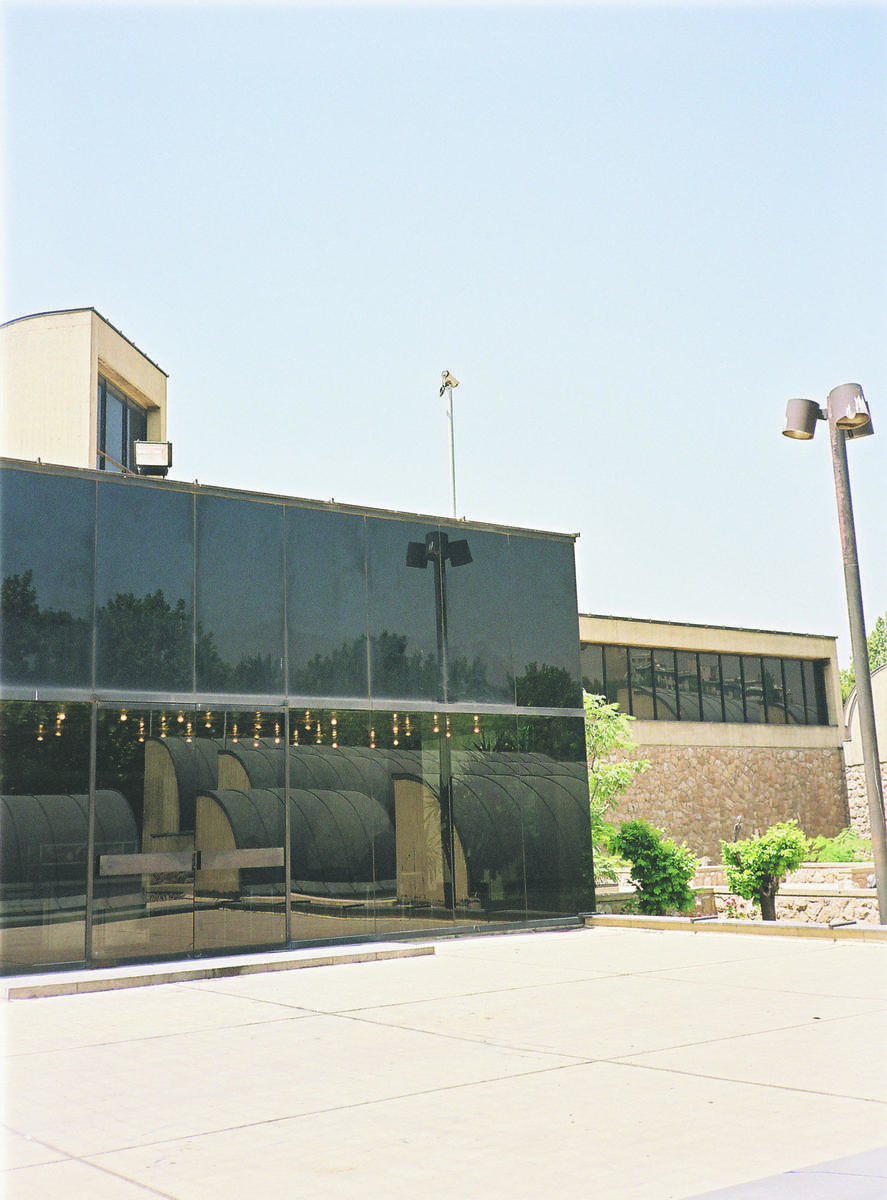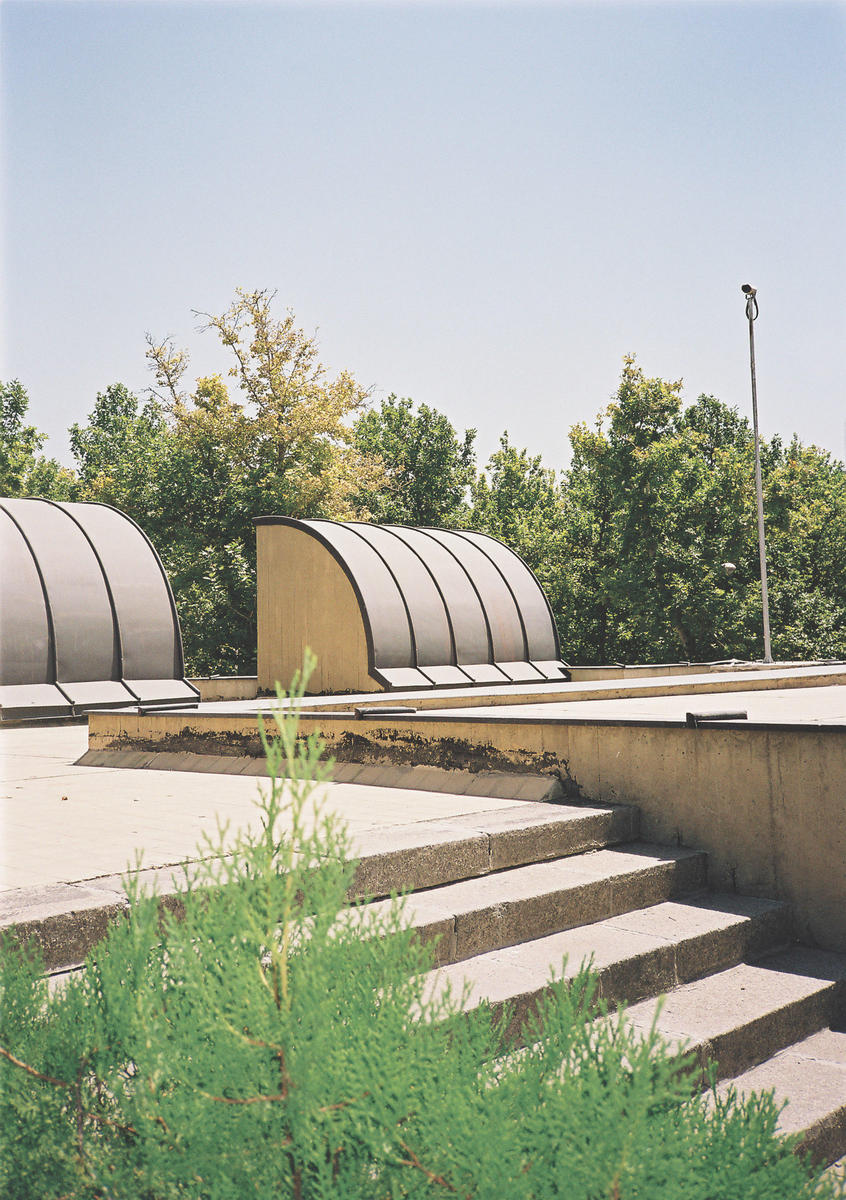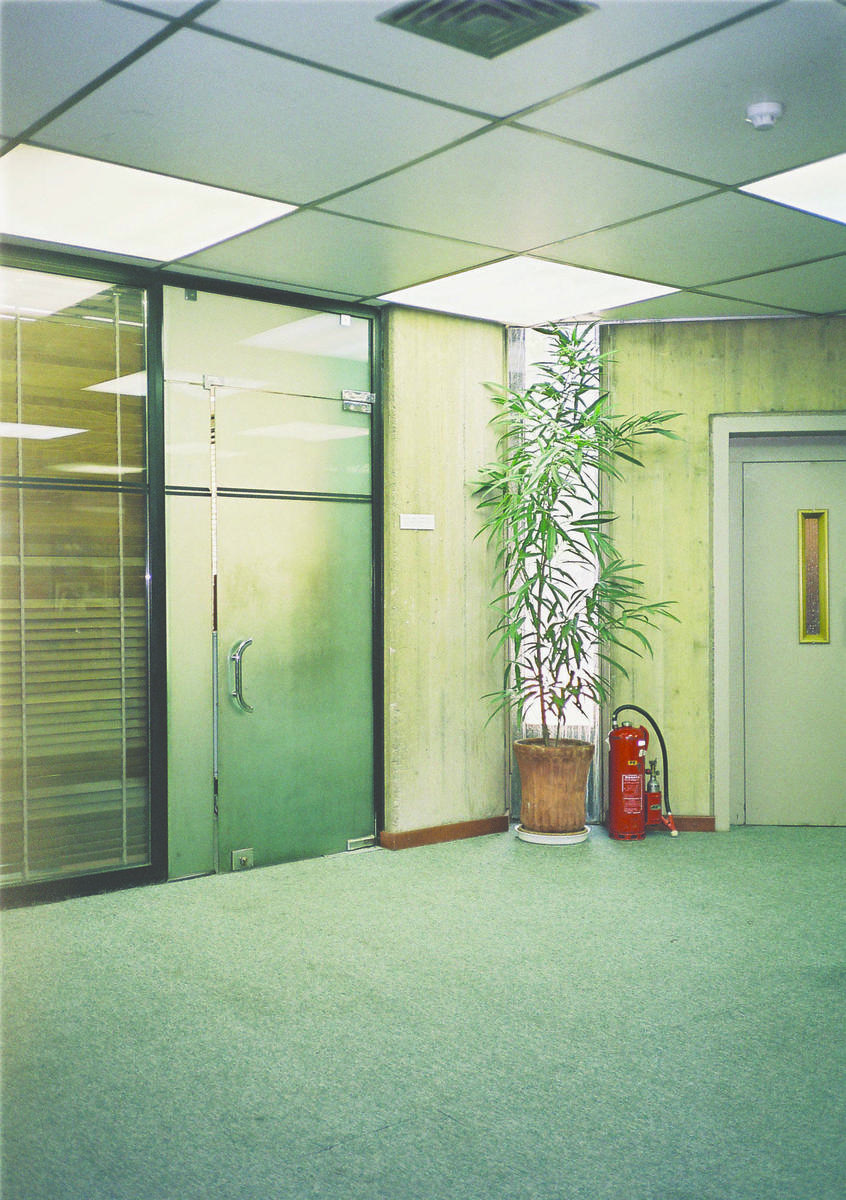
For some time now, public museums the world over have been implementing their own highly professional, big budget mises en scène of what international-standard contemporary art should look like, usually opting for something comparatively urbane, in a Duchampian wit meets iPod joie de vivre sort of way. On that count, the Muzeh-ye Honarhâye Mo’âser, the Tehran Museum of Contemporary Art — or the muzeh, as it is also called — begs to differ: not so much in that it rejects or transcends the modish iconography of the current circuit, but in that it simply cannot help but draw all the attention to itself. Though the museum does indeed decontextualize the work on view, it does so only to embed it within its own matrix of political rumor, historical heritage, and architectural detail so dense one ends up reading every single show as an experiment, another weird muzeh occurrence.
In the last few years alone, the institution has hosted group shows of “Islamic Art,” retrospectives of Iranian modernist greats, biennials of painting, mass exhibitions of local conceptualism, a tribute to British Artists, and much more. None of it really worked in the sense of slick curating, or clever conceptual choreography, or anything else that makes a visit to, say, Tate Modern a pleasant afternoon stimulus. Rather, it is the very interaction between any specific selection of artworks, good or bad, with the museum itself that is most striking.

The muzeh was founded by Queen Farah Diba only two years before the 1979 revolution. The actual building is something of a sprawling, uneven complex of minimal, sober design, built by Farah’s cousin, architect Kamran Diba. The visitor’s bewildering circular trajectory through it moves from generous hallways to small, quirky chambers and back again — sometimes leading underground, at other times offering delightful views of the surrounding park (complete with playgrounds, tea houses, the neighboring carpet museum, teenage lovers, unemployed day laborers and junkies on heroin).
Taking advantage of a slump in art-market prices, Farah swiftly invested sizable sums that actually saved several weathered American galleries from bankruptcy, and the collection quickly came to include a spectacular range of western canon masterpieces, from Gaugin to Leger to Rauschenberg and so on. After the 1979 revolution, the collection was stowed away in the cellar for almost two decades, but if you visited the museum any time during the past six years, you were likely to run into a refreshingly slipshod display in some corner, lumping together, say, two or three Miros with a handful of Rothkos. Meanwhile in the courtyard, some Giacomettis are being eaten away by acid rain, looking more measly and miserable than ever.
According to Bidoun contributor Serge Michel, the collection also includes some natty Adolf Hitler watercolors, which were presented at a 2001 press conference. The staff unveiled them with a vague air of embarrassment, then carried them back to the cellar with hardly a word of explanation.
Today, it is hard to overestimate the influence of the muzeh on the artistic modus operandi of the Tehran scene. On the one hand, the museum became more accommodating and attractive with the appointment of charismatic director Alireza Samiazar in 1998, who stepped down recently (amid a host of speculations on the actual reasons, leaving the museum to an uncertain future under a certain Majid Hosseini-Rad). But on the other, throughout Samiazar’s tenure, the space upheld a rather idiosyncratic definition of fair and critical professionalism, and it is hard to hold anyone accountable when living under a dictatorship, for the latter means you can always blame a fuckup on “the hardliners.” Be that as it may, international collaborations such as an extra large-scale cooperation with the Beyeler Foundation in 2002 had to be canceled due to highly erratic decision-making processes. My own, very modest curatorial endeavor at the museum five years ago, a week-long workshop/exhibition with Swiss artists, did not exactly gain in inspired ambiance when for some unknown reason on the third day, the museum guards started telling visitors at the door that the event was over.

In addition to logistical obstacles, the museum is known for embarrassing examples of petty financial mischief. Established Tehran painter Khosrow Hassanzadeh, for example, was once summoned as a court witness; he’d received a $300 per diem for a Beirut show, only a fraction of the money that had disappeared into staff pockets. The institution is also regularly accused of nepotism. If this is a standard occurrence affecting even minor institutions in any major city, what makes things more dramatic in the case of the muzeh is that there is so much at stake. For one thing, in an art scene suffering from considerable infrastructural shortcomings, the internationally well-known museum can easily dominate the fragile network of relations with foreign curators and institutions. In addition, any noticeable public funding for local artistic projects runs through the museum, which is often granted a decisive advisory role. Artists who choose to circumvent its tentacular sphere of influence must usually rely on private donors.
Since the museum never publicized a complete and official inventory of the work in its subterranean vaults (as, admittedly, few museums do), many local critics voiced concerns that it was bound to disappear sooner or later. Indeed, in early 2004, rumor held that Jackson Pollock’s Mural on Indian Red Ground had been sold to David Geffen for some $105 million. The sale was denied by Samiazar on national television.
Nevertheless, Ms. Diba’s collection was on show through most of last fall, under the terse exhibition title Modern Art Movement. Director Samiazar’s last muzeh show, including 188 artworks, was arguably a mature, dignified exit. It was seen as a sensation by much of the international press, if not so much for its curatorial prowess as for the wealth of journalistic soundbites it offers (the patchy censorship of various masterpieces, the air of Queen Farah glamour and 1970s nostalgia, the $2 billion collection in the hands of ayatollahs).
Admittedly, the exhibition’s amalgam of jumbled temporalities, political subtext, art-market history and sheer retro appeal is pretty jarring even by muzeh standards. To top it off, the show even included a helpful directorial statement by Samiazar himself, on “the Museum’s contribution to the universal endeavors to enlighten people about art,” along with several Warhol silkscreens, a Bacon triptych that was reportedly dismantled towards the end, and — surprise, surprise — Mural on Indian Red Ground.